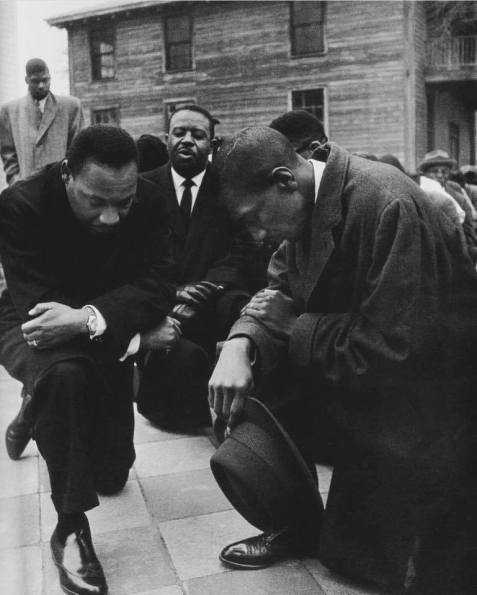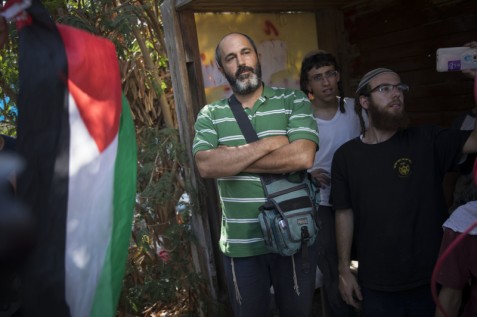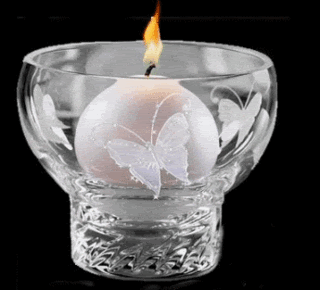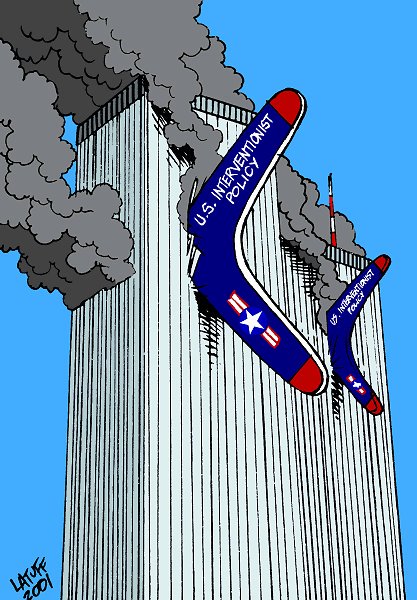Won’t you be my neighbour?
I have written about the neighbourhood I live in many times … It is truly an oasis of peace, literally surrounded by hatred and walls. Hopefully, one day it will become the norm in Israel …
NEVER SAY NEVER!
The following appeared in The Times of Israel yesterday …. it’s really a must read and very inspirational.
French Hill is a community of like-minded dwellers — a collection of people who want to live together in cookie-cutter Israeli apartment buildings surrounding a simple shopping center that includes a supermarket, bank, pizza parlor, hummus joint and café.

A view over French Hill, a Jerusalem neighborhood that’s attracted a mix of residents (Courtesy Lagur)
From Arab to Orthodox, Chinese to Korean, it’s love thy neighbor in French Hill
The northern Jerusalem neighborhood is home to a spectacularly diverse community, living in even more remarkable harmony
When Jerusalem Mayor Nir Barkat made a deal recently with ultra-Orthodox politicians to funnel Haredi growth to certain parts of the city, French Hill was not mentioned.
The decision to keep ultra-Orthodox institutions out of French Hill, a staunchly secular area just a stone’s throw from some of the city’s most religious enclaves, was no accident.
Situated next to Mount Scopus at the northern end of the city, the neighborhood has long been a secular Jewish stronghold, as well as home to a thriving Masorti Conservative synagogue, a Modern Orthodox contingent, a Christian Korean community, and, in recent years, Arab Israeli and Druze families who relocated from Israel’s north to Jerusalem for professional reasons. There is a small ultra-Orthodox community too — “ultra-Orthodox who work,” said one of its members — but no major ultra-Orthodox institutions, schools or synagogues.
Walking distance to Hebrew University’s hilltop campus and one of the city’s two Hadassah hospitals, the area has been a prime residential choice for decades for native and transplanted Jerusalemites alike.
Still, the mix of residents in this quiet, unassuming neighborhood is nothing short of remarkable, given the tense, often explosive interactions between people of all sorts in the tinderbox that is Jerusalem.
French Hill isn’t removed from the intensity evident elsewhere in the city. The neighborhood, built in 1967 following the Six Day War, is flanked by several Arab villages and abuts a major traffic intersection that connects northern Jerusalem with roads to Maale Adumim in the West Bank and the Dead Sea, as well as the Palestinian neighborhood of Shuafat.
The intersection has been the site of 11 terror attacks in the last 15 years.
The ultra-Orthodox neighborhoods of Ramat Shlomo, Ma’alot Dafna and Ramat Eshkol are also just across that intersection.
And yet, say residents, French Hill is a community of like-minded dwellers — a collection of people who want to live together in cookie-cutter Israeli apartment buildings surrounding a simple shopping center that includes a supermarket, bank, pizza parlor, hummus joint and café.
“It’s a kibbutz around here,” said Merav Elbaz, who grew up in French Hill and now serves on the local community council. “It’s a neighborhood in every sense of the word.”
The Conservative congregation is strong, and so is the Arab community, said Rabbi Haya Baker, who has headed French Hill’s 25-year-old Ramot Zion Conservative synagogue for the last decade.
“It’s mixed in ways that I can’t even describe,” said Baker, whose synagogue welcomes nonreligious families to take part in the life of the congregation.
It’s that amalgam of people from different backgrounds that drew Suzanne Shihadih and her husband, originally from the northern Arab town of Sakhnin, when they were looking for a Jerusalem neighborhood in which to raise their young family.
“There were others who came before us, and that made it easier,” she said. “We always thought we’d go back to Sakhnin, but it’s more comfortable for us here.”
Shihadih is a teacher, her husband is an attorney, and they felt instantly comfortable in French Hill, surrounded by young families, both Arab and Jewish, who were a lot like them.
“We’re not Jewish and we’re not East Jerusalemites,” said Shihadih. “We feel like we belong here.”
It’s uncommon for Arabic speakers to live in a primarily Jewish Jerusalem neighborhood, commented Adam Shay, a Jewish resident of the neighborhood who is also a transplant from the country’s center. But it works in French Hill.
“They’re a very upwardly mobile crowd,” said Shay, referring to his Arab friends. “They’re lawyers and accountants, academics. Some are Druze, some are Christian or Muslim, and I’m not always sure who’s what. They want to live in a bilingual society, and they’re not East Jerusalemites, either,” referring to Arab residents from East Jerusalem, whose complicated residency status in the state of Israel sets them apart from their fellow Palestinians and from Arab citizens of Israel.
Better together
The various French Hill populations lived peacefully but separately alongside one another for years, until November 2014, when a fire was set in one of the classrooms of Hand in Hand, the bilingual Arabic-Hebrew school in Pat, a neighborhood on the other side of Jerusalem.
That night, a group of French Hill neighbors sat together at a local café feeling utterly depressed at the latest turn of events.
“We were all horrified,” said Shay. “Burning a school has nothing to do with politics, and that was something we all agreed upon at the table, even though we are a mix of people from different backgrounds and beliefs.”
They began discussing various kinds of efforts that could refute what had just taken place. Arabic classes for the kids were one idea, given that the local Arab population of children attended the local Jewish public school, but had little access to any kind of Arab curriculum.
In the end the group decided to organize an event that December at the local community center, combining Chanukah and Christmas with a menorah and tree, with one of the dads dressed as Santa Claus.
The activity was all about the kids, with zero religious debate or discussion, said Shay. “We have shared interests, we want a good education and for our kids to be happy.”
In the midst of the festivities, however, four men from Im Tirtzu, the right-wing Zionist organization, burst in, filming the event and announcing that everyone in the room supported terror.
Shay, thinking quickly, told the kids, “Hey kids, we love to live in the light,” referring to the words of the classic Chanukah song, “We Came to Drive Away the Darkness,” which all the kids joined in singing, drowning out the Im Tirtzu “yobs,” he said.
“It was beautiful and it was at that exact moment that we decided we exist, there’s a reason why we exist, and at the very least, let’s educate our kids to enjoy each other’s presence,” he said.
Following the incident, the committed residents started to call themselves Maan Yahad, a Hebrew and Arabic name meaning “better together.” Nearly three years later, the group is going strong, with close to 200 people, fairly evenly divided between Jews and Arabs. Their events don’t revolve around religious holidays, and if held on Saturdays, they try to exclude any use of music, money or electricity so that the religiously observant Jewish members can still take part.
It’s a mix that works, said Shay. No one needs to be registered in order to participate and anyone can join.
“Our motivation is our kids, and now we’re friends, we’re all there together,” said Shay. “We had 100 people at iftar, the post-Ramadan fast dinner in July, so we said, yalla, let’s get 200 next time.”
This school year, Maan Yahad received a budget from a small foundation, which they’re hoping will allow them to arrange an Arabic course for Hebrew speakers during the daily afterschool program, as well as enrichment classes for the native Arabic speakers, given that language barriers often create the greatest lack of understanding.
“Education is important to us, you need a framework for the kids,” said Shihadih, who sent her elder son to the private American School until third grade, when they switched him to one of the local French Hill public schools. “Without playmates and friends, you can’t do it.”
It feels different now, said Shihadih and Shay, referring to their children’s classes in the same school.
“In my elder daughter’s class, there’s a girl who’s Chinese, one who is French with two mommies, two Arab kids, a Druze kid and a few from Anatot, a Jewish community in the West Bank. Yes, the majority are Israeli Jews, but it’s diverse and it’s beautiful and the first thing you learn as a parent is that kids just don’t care,” he said.
Won’t you be my neighbor?
There has been an influx of some ultra-Orthodox Israelis to the mostly secular neighborhood. And that supposed growth led to a Kan television report in June about how that influx was ostensibly changing the neighborhood.
But the report, said locals, skewed the realities of the neighborhood, purporting to show that the ultra-Orthodox were taking over, jacking up real estate prices, and pushing for better, bigger preschools for their children.
The figures weren’t correct, said Rabbi Baker.
“I don’t know where they were from,” she said. “There isn’t the same amount of ultra-Orthodox kids and non-ultra-Orthodox kids. It’s not even close. There are three times the number of regular preschools in the area.”
According to Nelly Ephrati Artom, a real estate agent with ReMax Vision, there are young Haredi couples buying smaller apartments at the entrance of the neighborhood, given its walking distance to Ramat Eshkol and Givat Hamivtar, two nearby, heavily ultra-Orthodox areas.
“French Hill is a lot cheaper than Ramat Eshkol,” said Artom. “If you get an apartment for NIS 3 million ($852,000) in French Hill, the same size apartment would cost more in Ramat Eshkol.”
French Hill has always been less expensive than Ramat Eshkol, said Artom, given that the latter neighborhood has less available real estate, and fewer buildings overall.
But prices have been rising in French Hill, particularly since the arrival of the light rail that allowed young couples to live there without having to rely on private transportation.
There are also several small, ultra-Orthodox synagogues in the area, held in private homes, said Ephrati, as well as small daycare programs for ultra-Orthodox children, that are also run out of peoples’ private homes.
It isn’t surprising that French Hill caught on with a different crowd, said Artom.
“The population of French Hill has always been highly intellectual, not rich, a lot of professors and Hadassah staff,” she said. “It’s very clean, it’s old-fashioned, and it’s special, it’s like a kibbutz socially, a place where people say “Hi” in the streets.”
It was those characteristics, along with the staunchly secular character, that drew Shulamit Ansbacher and her husband to the area, making them one of the new, young ultra-Orthodox families. Ansbacher is a lawyer who wears a wig for religious reasons, and calls herself a more modern Haredi woman. Her husband is originally from the beach town of Netanya, and it was important to him that they live in a mixed community.
“It was important to us that we teach that to our kids,” she said. “Not everything has to be the way you live. In order to live in the world, you have to learn how to deal with others.”
The Hill, as the locals call it, is an unusual place, said Ansbacher.
“It’s interesting here,” she said. “It even has a reform synagogue,” referring to the Masorti congregation Ramot Zion, and using the incorrect but typical Hebrew slang term for any non-Orthodox synagogue. “But while there’s this discussion about the ultra-Orthodox taking over the neighborhood, that’s not what we talk about around here.”
Her family has changed the balance in their building, as a family with young children, and it’s been a positive shift for the neighbors, said Ansbacher. Yet she doesn’t want French Hill to become Ramat Eshkol, the nearby neighborhood that did become completely ultra-Orthodox.
“I think Haredim won’t come here if we’re this kind of ultra-Orthodox here,” said Ansbacher. “We’re ultra-Orthodox who work, like everyone else. We don’t threaten anyone. I don’t feel antagonism from anyone here,” she said.
She would love to have an ultra-Orthodox school in the neighborhood. Her daughters go to school in Rehavia, a 20-30 minute drive in morning traffic and her sons are in Neve Yaakov, another Jewish settlement just north of the city.
“A Haredi school would be great, but it would freak people out,” she noted. “There are nuances among Haredi schools that the secular don’t know about, they think it’s just one type of Haredi, so it’s threatening. But I think I’d also feel threatened.”
The religious people who live in French Hill don’t want to live in a shtetl, said Shay, referring to the small villages where Jews lived in Eastern Europe before the Holocaust.
“When I barbecue on Shabbat, I let my religious neighbor know that I’m going to be turning on the grill,” he said. “It probably bothers him, but he wouldn’t say anything because that’s French Hill.”
If French Hill residents were to get scared by a relatively small influx of ultra-Orthodox residents, and started to believe the secular dwellers will leave, then that would create a reason to leave, added Elbaz.
“Everyone who’s here wants to be part of what’s happening here,” she said. “The haredization of the city worries us all, but my kids get a lot by living here. There’s an openness here that doesn’t exist in other places.”
*
More photos and video (in Hebrew) at the source













 it will eventually do to you DUMBASS
it will eventually do to you DUMBASS 

























































